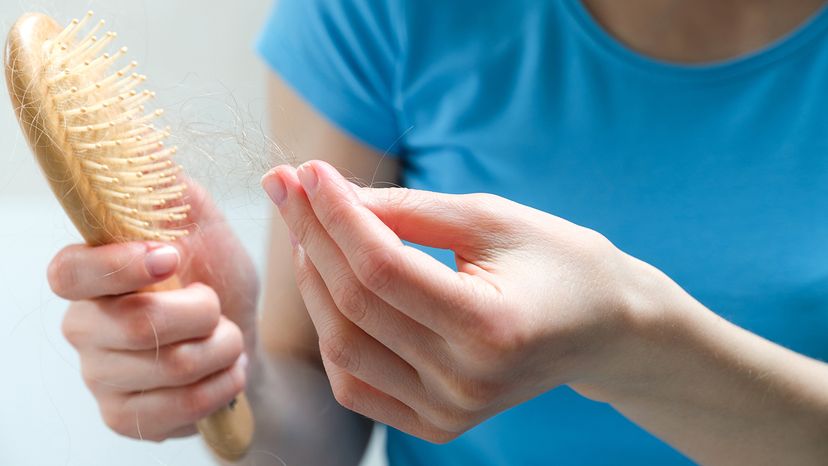When it comes to cleaning your hairbrush and removing all the hair trapped within the bristles, your approach might differ depending on the kind of brush you use. But mostly, you'll follow the same steps whether you use natural bristle brushes or a plastic brush.
Gather Your Supplies
The cleaning process doesn't require too many tools. Gather:
- Two brushes: You'll need the brush you're cleaning and a helper brush, like a clean toothbrush.
- Pointy-ended comb: Choose a pointy-ended comb (like a rat tail comb) to help remove excess hair trapped in your brush.
- A cleaning liquid: You can use a gentle shampoo, body wash or dish soap. For a wood or boar bristle brush, choose a sulfate-free shampoo.
- A bowl: Whether you're cleaning a round brush or paddle hair brush, pick a large enough bowl.
- Warm water: You can let your comb or synthetic brush soak in warm water.
- Clean towel: You'll need a clean towel at the end of the process.
- Scissors (optional): Scissors can help you remove hair.
Remove Hair From Your Brush
Before you do a thorough cleaning, remove as much hair as possible from the brush bristles. Use the pointy end of a comb to loosen and lift the hair. For stubborn strands, you can use scissors.
5 Deep Cleaning Steps
- Prepare the cleaning solution. Mix warm water with a few drops of gentle shampoo or dish soap in a large bowl. For natural bristles and wooden handles, avoid hot water to prevent damage.
- Start a brush soak. If you have synthetic brushes, let them soak in the soapy water for a few minutes. For brushes with wooden handles or natural boar bristles, only the bristles should touch the water, and only briefly.
- Perform a gentle scrub. Use your helper brush or toothbrush to gently scrub the bristles. Pay special attention to the base of the bristles, where oil and product residue accumulate.
- Rinse thoroughly. Rinse under lukewarm water, ensuring you wash away all soap.
- Dry properly. Shake off excess water and lay the brush bristle-side down on a clean towel. Allow it to air dry completely.
Another option is to use baking soda for stubborn residue. Mix with water and cover the bristles for 30 to 60 minutes.
Special Case: The Lice Scenario
If you suspect your brush has been exposed to head lice, follow these additional steps.
- Remove hair. As before, clear all hair from the brush.
- Disinfect. Soak the brush in rubbing alcohol or a lice-killing medicated shampoo.
- Rinse and dry. Rinse thoroughly and let it air dry.
